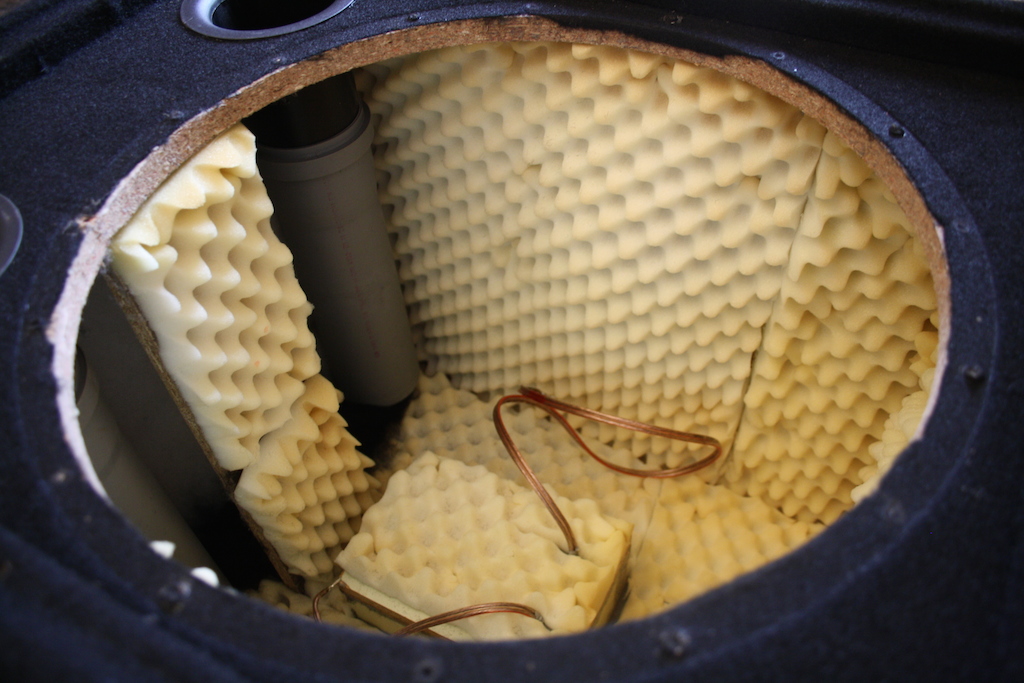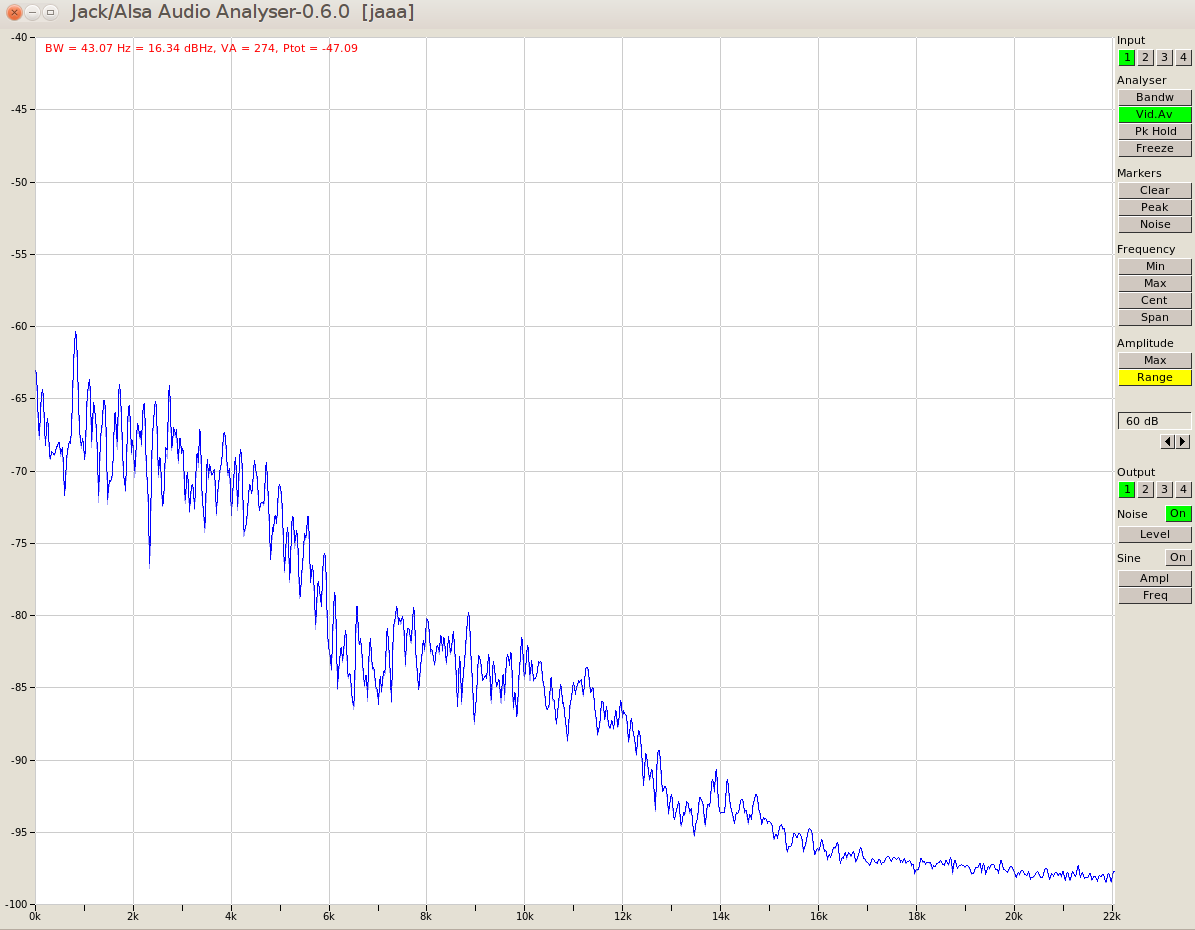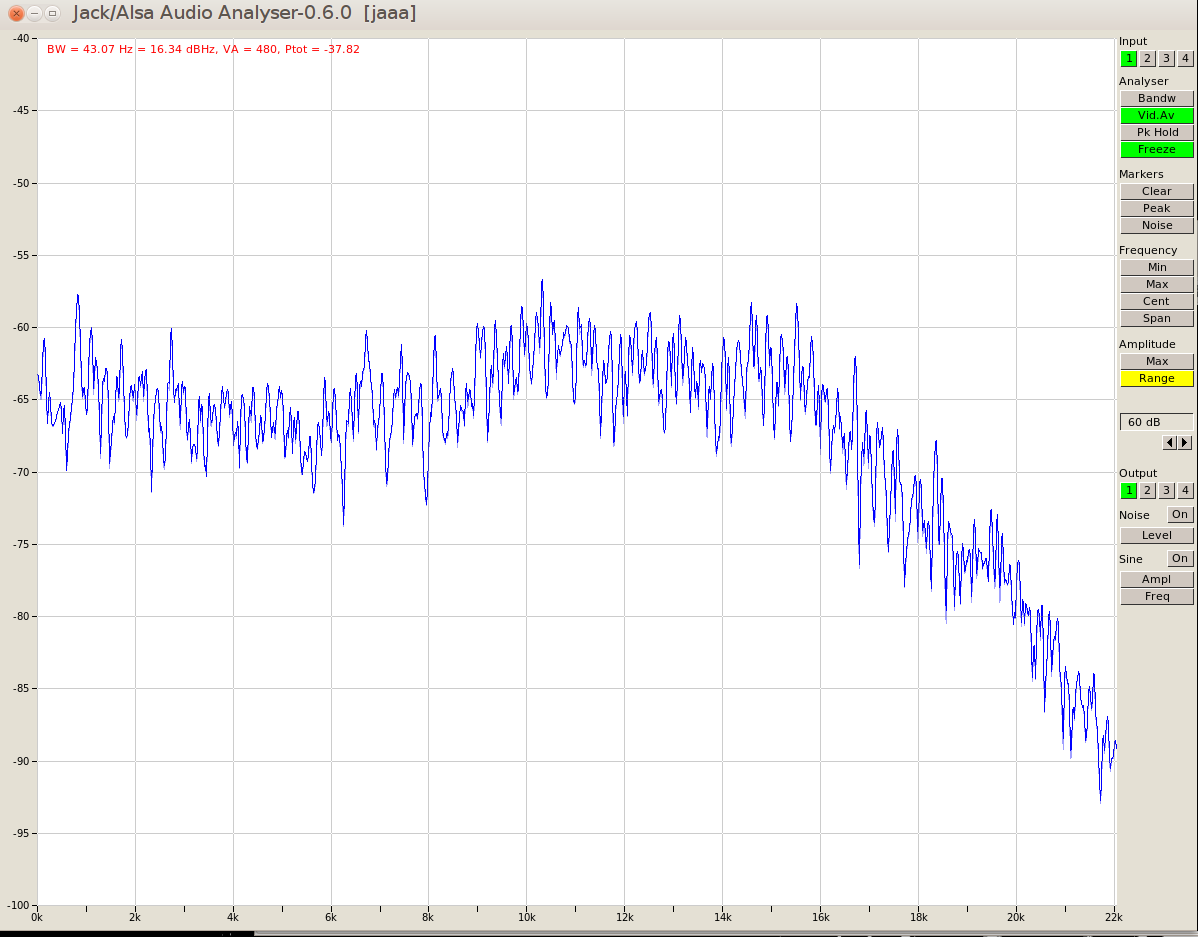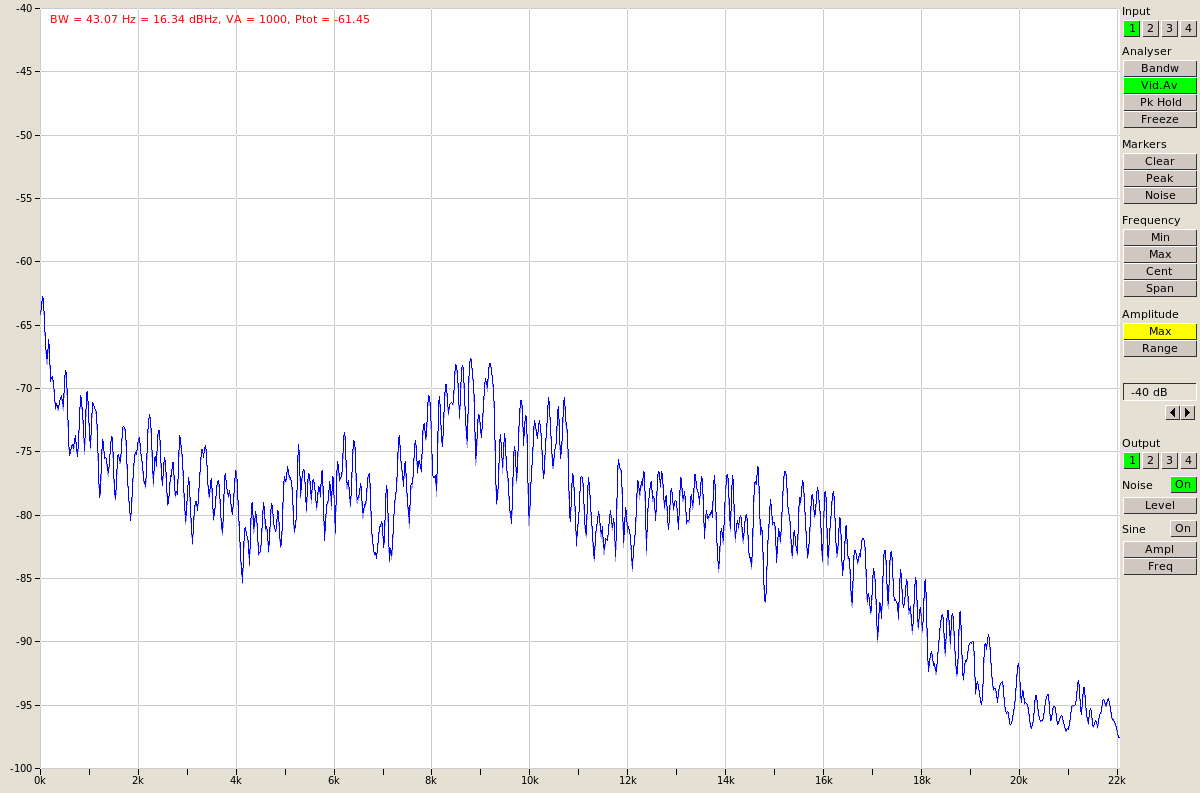“Yeah Science, Bitch” -- Jesse Pinkman
I did some research. The concept of tuning a vented box very low is called EBS (Extended Bass Shelf). This site explains it pretty good, the basic idea is getting more bass on low frequencies. You basically take an enclosure 160-180% the size of a “maximum flat” setup and then tune it close to Fs (Free Air Resonance of the speaker). As I already found out the previous owner did tune the enclosure to about that frequency. But how about enclosure size? The manual suggests “maximum flat” enclosures from 64 to 92 litres, suggesting an EBS setup between 102 and 165 litres. The enclosure has around 80 litres not accounting for the speaker and the vents. Well, I guess I found a problem here.
I tried some more online calculators and plenty of them tune close to Fs without even mentioning it. So it’s more than understandable to end up with this setup. But as always, you gotta trust your senses: If it sounds shitty there has to be a reason… Ah, and trust the engineers. If you deviate far from their suggested path you better know what you are doing…
So to wrap this up and continue other important work I’ll go the humble approach. I’ll measure the actual resonance frequency of the enclosure and tune it to something between 36-39Hz for the suggested “maximum flat” response.
Measuring shouldn’t be to difficult, the impedance of the speaker drops at the resonance frequency, so the current spikes ( I = U/R ). So just rig an ampere meter to the speaker, a frequency generator to the amplifier and play with the frequency knob until you reach maximum current. Well, my ampere meter doesn’t like low frequencies at all making it impossible to get a reading. Using a shunt (resistor in series) and measuring voltage I pinpointed the resonance frequency at 35,7Hz. That’s way lower than the expected 43Hz. Good news: That’s the lower end of my target frequency. Bad news: I’ve got to redo the math…
Some site suggests if the distance of the ports to any wall is less than their diameter the tuning gets lower. That’s definitely the case here… The increase of Volume by damping depends strongly on the material, ranging from 0-20%. If I run the numbers with an estimated volume of 115 litres everything checks out and the estimated resonance frequency with the long vents would be around 24Hz. I guess I have to measure that as well 🙁 Hmmm, 27Hz, not too bad for an estimate…
Hmm, maybe I should give the 31Hz a shot. 18,5 cm for the vents… Let’s say 20 for good measure… After some try and error 21cm turn out to lead to 30.something Hz. Good enough. Yeah, there is more ooompfff on low frequencies, you don’t hear some but feel it in your guts. I had to adjust the woofer level back to +6db on the amp. But it seems to be a trade-off with quality. Most of the time there’s not enough bass and then suddenly it’s killing you when the frequency drops low enough. For example with “Clint Eastwood / Gorilaz”, some low rumbling for the whole song and then the break with a couple of low beats is just plain awful. Somebody suggested that EBS setups often have cancellation issues on the two octaves above the resonance frequency (so 30-120Hz). Yeah, that might be the issue here.
To cut a long story short: EBS doesn’t work out with this enclosure, even if you do it right. I guess that’s 2:0 for the engineers… Disclaimer: I’m working low volume settings (neighbours…) and the placement of the sub is bad. Maybe it’s getting better with optimal placement and if you crank up the amplifier. Maybe not. At least now the sound setup at my desk is ok. Time to actually do some work…







